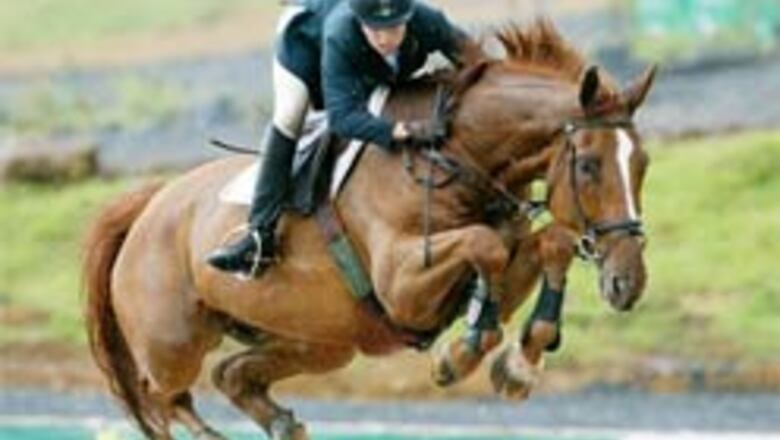
views
The six events (all mixed)
Show jumping (two events): Individual and team, Dressage (two events): Individual and team, Three-day event (two events): Individual and team.
The format
Individual show jumping: The first stage is divided into three rounds, leading to the final which features two rounds. In the final, the first round determines the 20 competitors for the second round. The horse and rider with the least penalty points over the two rounds is declared the winner. There is an extra round in case of a tie. If there is still a tie, the fastest competitor wins.
Team show jumping (three or four riders per team): An event over two rounds, which also serve as the second and third rounds of the individual event. The points of the best three riders from each team are tallied to determine the winners. An extra round is staged in case of a tie. If there is still a tie, the fastest team wins.
Team dressage (three riders): The competitors dispute the Grand Prix (mandatory programme). Five judges mark each technical element out of 10. All three riders count in the team total. The team with the highest points tally is declared the winner.
Individual dressage: The top 25 from the team event take part in the Grand Prix Special (same elements as the Grand Prix), but are executed in a shorter time period. The top 15 from the first round advance to the final, a free programme set to music.
Individual three-day event: An event split into three disciplines over three days in the following order: dressage, cross-country and show jumping. Each rider must use the same horse in each discipline. The winner is the competitor with the least penalty points.
Team three-day event (three to five riders): The winning team is determined by the least amount of penalty points by riders in the individual event. Only the top three from each team are counted.
Milestones
680 BC: In the 25th ancient Olympic Games, equestrian races are held for the first time in Olympia.
1900: Individual showjumping is included in the Olympic programme at the Games in Paris. Also included in the programme are the equestrian long jump and the high jump. Only army officers are allowed to participate.
1952: Equestrian events are opened to civilians for the first time, as well as all levels of military staff. For the first time also, women are allowed to participate in the dressage event.
1956: With strict Australian quarantine laws already in place before the Melbourne Games in 1956, the Olympic equestrian events are held in Stockholm.
1988: All events are mixed as of this date.
Stars
Pierre Jonquères d'Oriola (France): The only double. The Frenchman is the only competitor to win two indvidual show jumping titles (in 1952 and 1964). He also won Olympic silver in the team event in 1964 and 1968 and a world title in 1966.
Reiner Klimke (West Germany): The king of dressage. Klimke won six Olympic gold medals, one individual and five team, the last of which was in 1988 at the age of 52. His feats are a record for all equestrian events. Double world champion and triple European champion in the individual event.
Mark Todd (New Zealand): The three-day specialist. Double Olympic champion in the three-day event in 1984 and 1988 and a bronze medalist in 2000. Also silver medalist at the world championships in individual and gold medalist in the team competition.


















Comments
0 comment